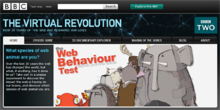GCMW 102: Schedule
Week 1: HTML Basics
What is HTML; Writing your own HTML code; Frequently used HTML4 codes; Introducing HTML5; HTML vs. CSS formatting
Week 2: Setting Up a New Site
Creating a new site; Adding pages; Saving a page on your site; Defining page properties; Work views; Viewing local files; Selecting and editing files
Week 3: Adding Text and Images
Typography and images on the Web; Adding text; An introduction to styles; Previewing pages in a browser; Creating hyperlinks; Creating lists; Inserting images; Image resolution; Image formats; Linking images; Editing images; Optimizing images
Week 4: Styling Your Pages with CSS
Benefits of CSS stying; Understanding style sheets; Creating and modifying styles; Advanced text formatting with CSS; Div tags and CSS IDs; Internal vs external style sheets; Attaching an external style sheet to your page
Week 5: Creating Page Layouts with CSS
The CSS Box model; Basics of CSS margins, padding and borders; Reviewing the <div> element; Reviewing the ID selector; Creating a centered page; Cross browser compatible layouts; Absolute vs relative positioning; Setting margins and borders
Week 6: Advanced Page Layout
Layout with AP divs vs layouts with floats; Creating a floated image; Creating columns with HTML and CSS; Creating the HTML structure with div elements; Using the clear property; Creating a list-based navigation bar; Creating the appearance of equal height columns; Browser compatibility; Fluid grid layouts
Week 7: CSS Transitions and Web Fonts
Understanding the role of CSS3; Adding a CSS transition; Basics of Web fonts; Adding Web fonts to your site; Styling your heading with a Web font
Week 8: Working with Tables
Using tables in Web design; Importing table data; Selecting table elements; Modifying table size; Modifying table structure; Formatting and styling tables in HTML; Formatting and styling tables with CSS; Controlling cell alignment, padding and borders with CSS; Data sorting tables
Week 9: Fine Tuning Your Workflow
Customizing panels and panel groups; Resizing the document window; Using guides; Using grids; The tag selector; Tiling documents
Week 10: Adding Flash, Video and Sound Content
Making Web content interesting; Inserting Flash movies; Adding video; Flash video; QuickTime video and Windows Media; Inserting sound
Week 11: Maximizing Site Design
Creating modular page elements; Snippets; Library items; Templates; Creating pages from templates; Editable regions; Modifying templates; Repeating regions
Week 12: Working with Code Editing Features
Working with code; Quick tag selector; Inserting comments; HTML5 code hinting; The coding toolbar; Validating your code; Running a report; Formatting code
Week 13: Building Web Forms
Adding a form to a page; Inserting text form elements; Inserting checkboxes; Creating radio buttons; Incorporating text areas; Working with lists; Adding a Submit button; Specifying a form action; Emailing form data; Styling forms
Week 14: Adding Interactivity with the Spry Framework
Spry widgets; Ajax; spry menu bar; Spry tabbed panel; Spry accordion panel; Spry collapsible pane; Spry data widgets; XML; Creating a Spry XML data set
Week 15: Mobile Design and Layouts
Rise of the mobile Web; Tools for mobile layout; Viewing Web pages with multi-screen feature; Media queries defined; Creating a site wide media query file; Organizing your style sheets; Creating a layout optimized for mobile; Fluid grid layout; Creating a tablet layout; Styling elements in your fluid grid layout
Week 16: Reports, Optimization and Maintenance
Tools and techniques for creating a fully functional Website; Reports and site management


